SET AND DRIFT
(unfolding as 2-4 constellations for/of Samstag Museum of Art), 2020
Materials and equipment from the institution, photographs, customised steel fixtures, mirror, ribbon fixtures, video, screens, timber installation ramp borrowed from the adjoining exhibition
in: ‘Adelaide // International’, curated by Gillian Brown and Erica Green, Samstag Museum of Art, Adelaide
Materials and equipment from the institution, photographs, customised steel fixtures, mirror, ribbon fixtures, video, screens, timber installation ramp borrowed from the adjoining exhibition
in: ‘Adelaide // International’, curated by Gillian Brown and Erica Green, Samstag Museum of Art, Adelaide
This project was developed through an embedded working process at Samstag Museum of Art, during the build and installation periods for ‘Adelaide // International’. The museum’s architecture and installation procedures are engaged in this work
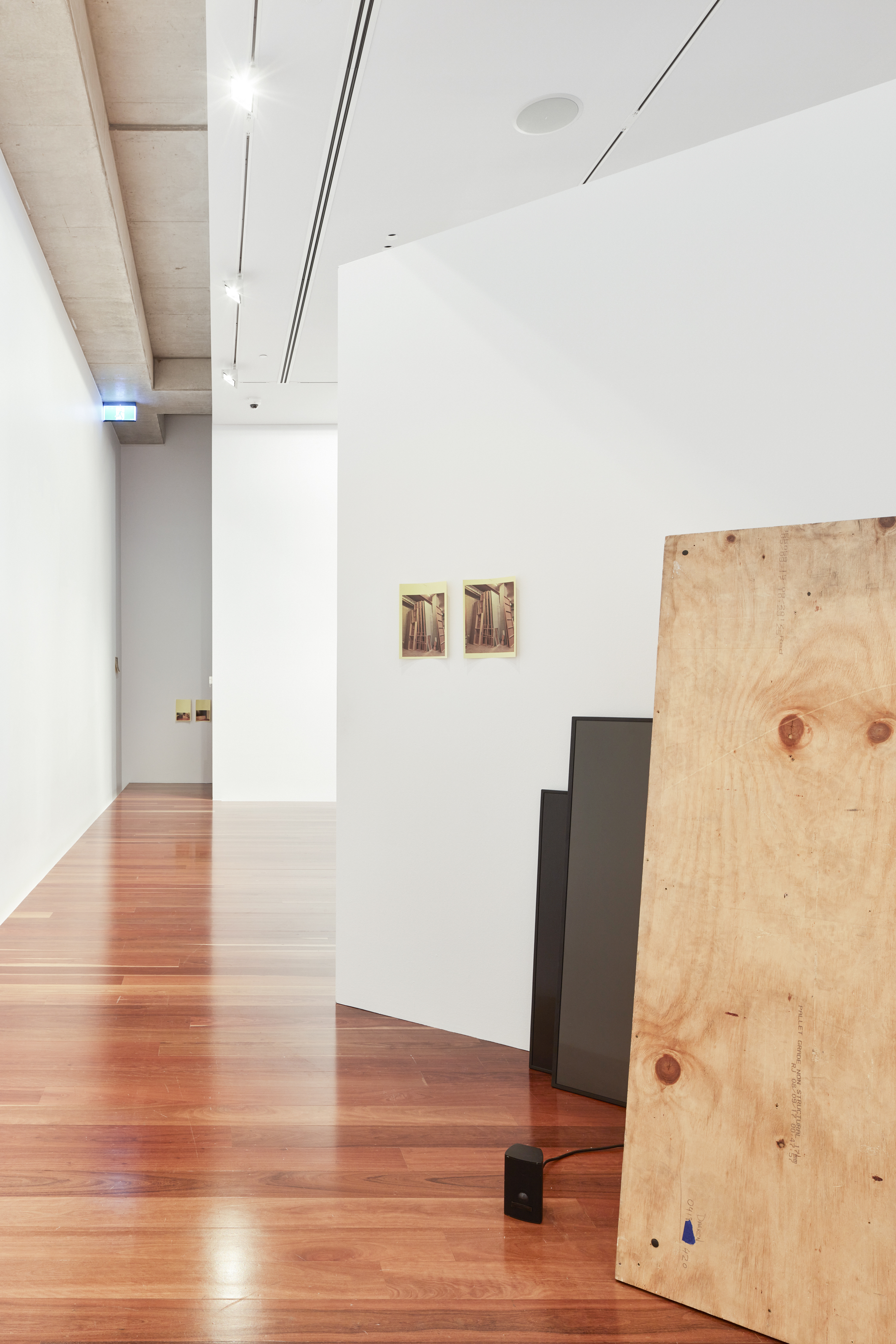

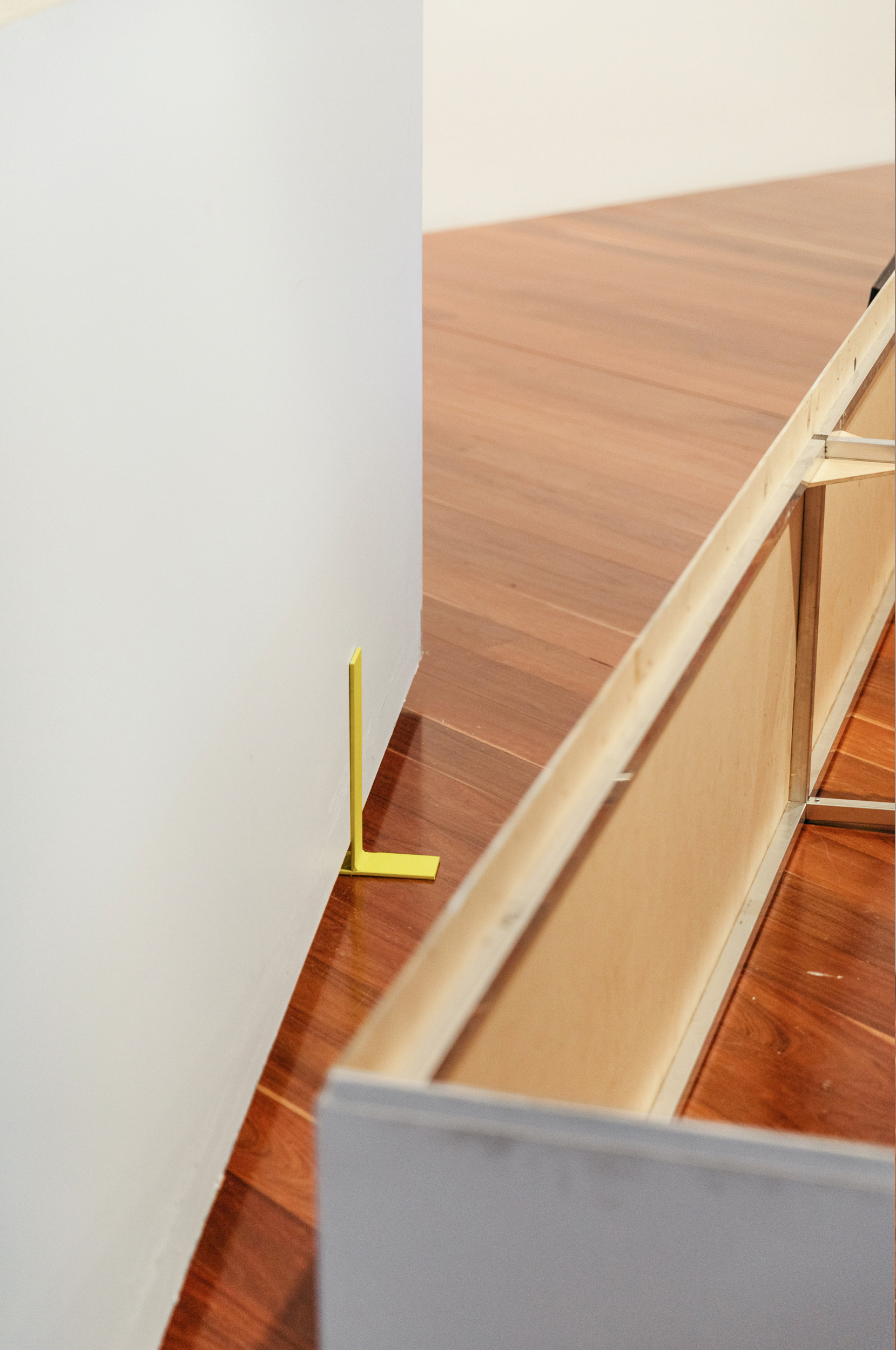





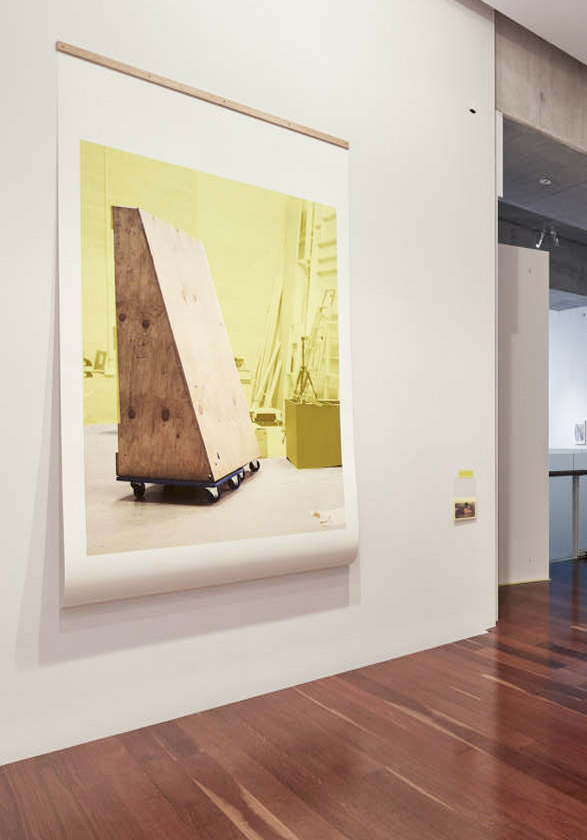





Placeholders, within/including, 2019-ongoing
site-specific video and audio recordings, single channel video, ready-made objects and equipment from the institution, spatialised for site. dimensions and duration variable
At: PFERD Forum For Contemporary Art, Vienna
site-specific video and audio recordings, single channel video, ready-made objects and equipment from the institution, spatialised for site. dimensions and duration variable
At: PFERD Forum For Contemporary Art, Vienna
This set of Placeholders works was situated within CONCURRENT CASTINGS - PFERD, a residency research project undertaken by Helen Grogan and Shelley Lasica





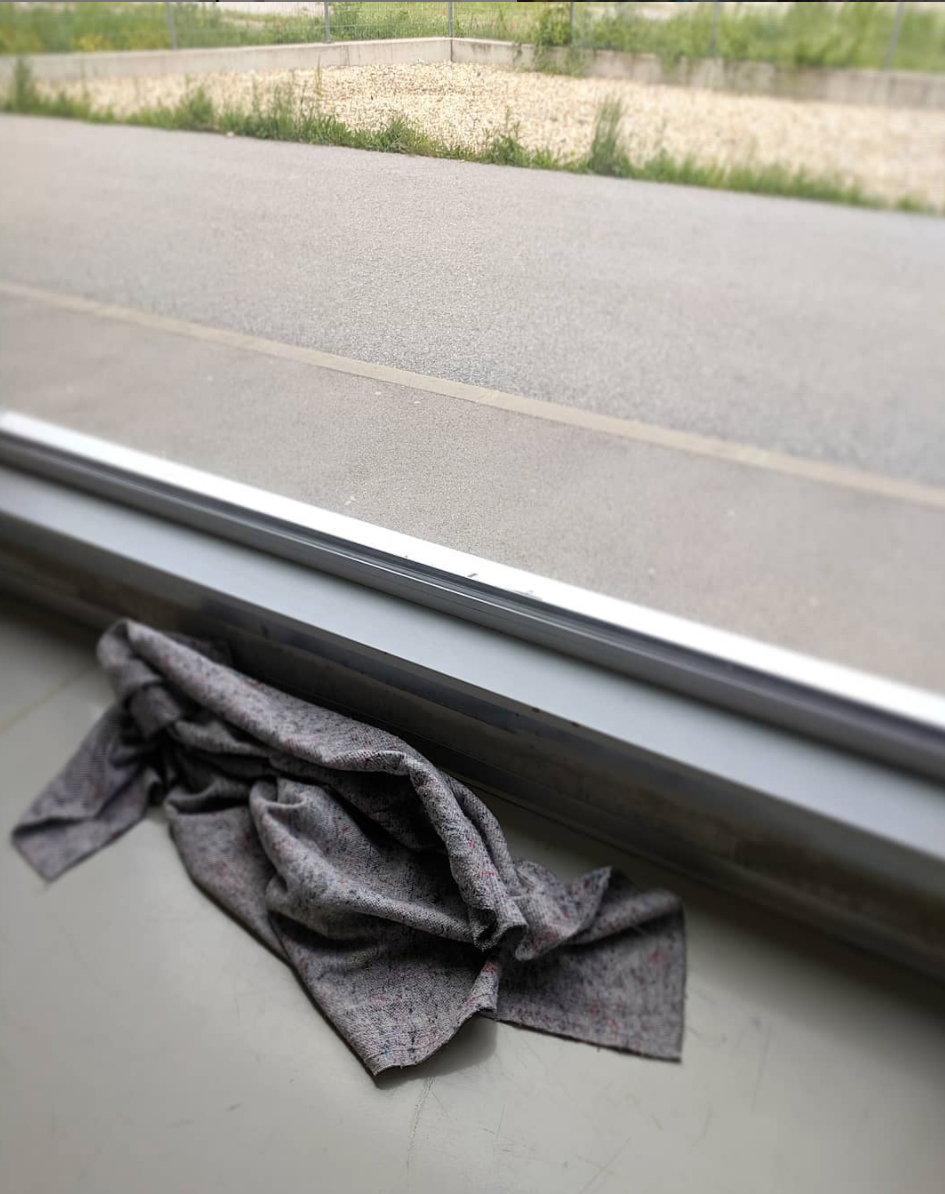
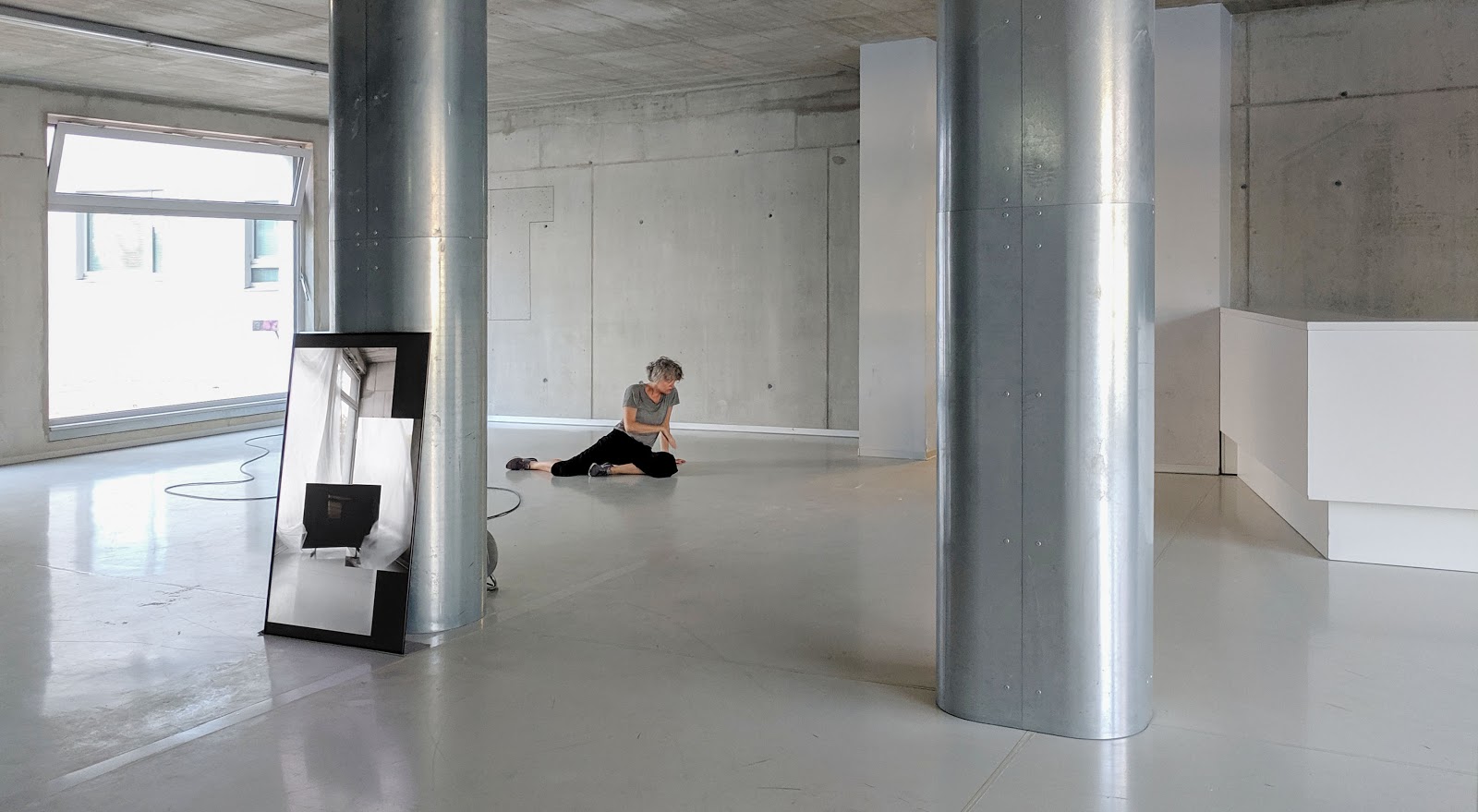
project credits:
A set of installations and video interventions developed by Helen Grogan within CONCURRENT CASTINGS - PFERD, a residency research project undertaken by Helen Grogan and Shelley Lasica.
Shelley Lasicia’s solo performance work, not the thing itself is visible in some installation views of Placeholders, within/including.
A set of installations and video interventions developed by Helen Grogan within CONCURRENT CASTINGS - PFERD, a residency research project undertaken by Helen Grogan and Shelley Lasica.
Shelley Lasicia’s solo performance work, not the thing itself is visible in some installation views of Placeholders, within/including.
Witness Report for Nell (Perpetual Vessel, Work Floor Repository) (2023 - 2025)
sonic field recording simulation, research photographs and video, devised for de Appel online.
This project is currently in technical development. It began upon invitation to contribute to the ‘Witness Reports’ within de Appel Archive, an initiative by Nell Donkers, Curator Archive, de Appel.
Curator: Nell Donkers, Curator Archive, de Appel
Institution: De Appel Archive, During research visit
This project is currently in technical development. It began upon invitation to contribute to the ‘Witness Reports’ within de Appel Archive, an initiative by Nell Donkers, Curator Archive, de Appel.
Curator: Nell Donkers, Curator Archive, de Appel
Institution: De Appel Archive, During research visit

further project details:
Sonic and video recordings were collected during a four-week research at the de Appel Archive in 2023, just prior to the institution’s relocation from Schipluidenlaan 12. That adjacent research focused on relational and responsive documentation strategies within de Appel’s archive processes and curation.
A sonic work is central to the project, and not currently presented on this website. Field recordings captured within the physical space of the archive are processed into a continuous, simulated soundscape of the Schipluidenlaan site, with technical assistance from Daniel Jenatsch. These recordings register both interior and peripheral events from that period—including sounds from a nearby construction site and children’s play equipment.
In the context of imminent relocation, this witness report considers how sensibilities endure through situated experience and embodied processes. The broader research explored relational and responsive strategies within de Appel’s archive and its evolving engagement with artists’ practices.
A sonic work is central to the project, and not currently presented on this website. Field recordings captured within the physical space of the archive are processed into a continuous, simulated soundscape of the Schipluidenlaan site, with technical assistance from Daniel Jenatsch. These recordings register both interior and peripheral events from that period—including sounds from a nearby construction site and children’s play equipment.
In the context of imminent relocation, this witness report considers how sensibilities endure through situated experience and embodied processes. The broader research explored relational and responsive strategies within de Appel’s archive and its evolving engagement with artists’ practices.
Untitled (field recordings - Part 1), 2018
site-specific performance for video (with Vasilena Gankovska and Helen Grogan), multi-screen video installation, chipboard subflooring panels, dimensions and duration variable
at: Gallerie IG Bildende Kunst, Vienna, curated by Günther Oberhollenzer and Vasilena Gankovska
site-specific performance for video (with Vasilena Gankovska and Helen Grogan), multi-screen video installation, chipboard subflooring panels, dimensions and duration variable
at: Gallerie IG Bildende Kunst, Vienna, curated by Günther Oberhollenzer and Vasilena Gankovska
This project was developed in close conversation with IG Bildende Kunst board members and IG Bildende Kunst curator Vasilena Gankovska
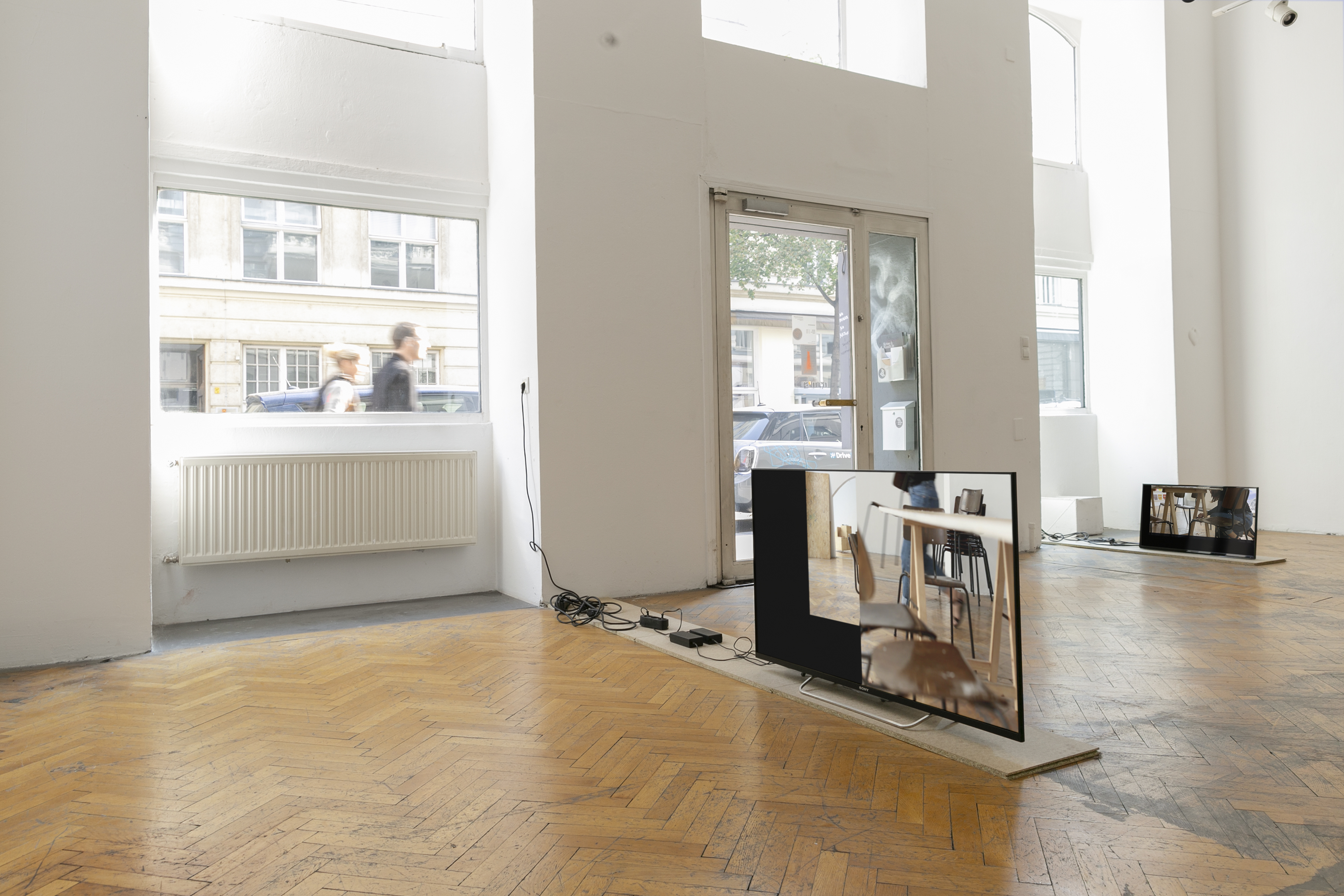

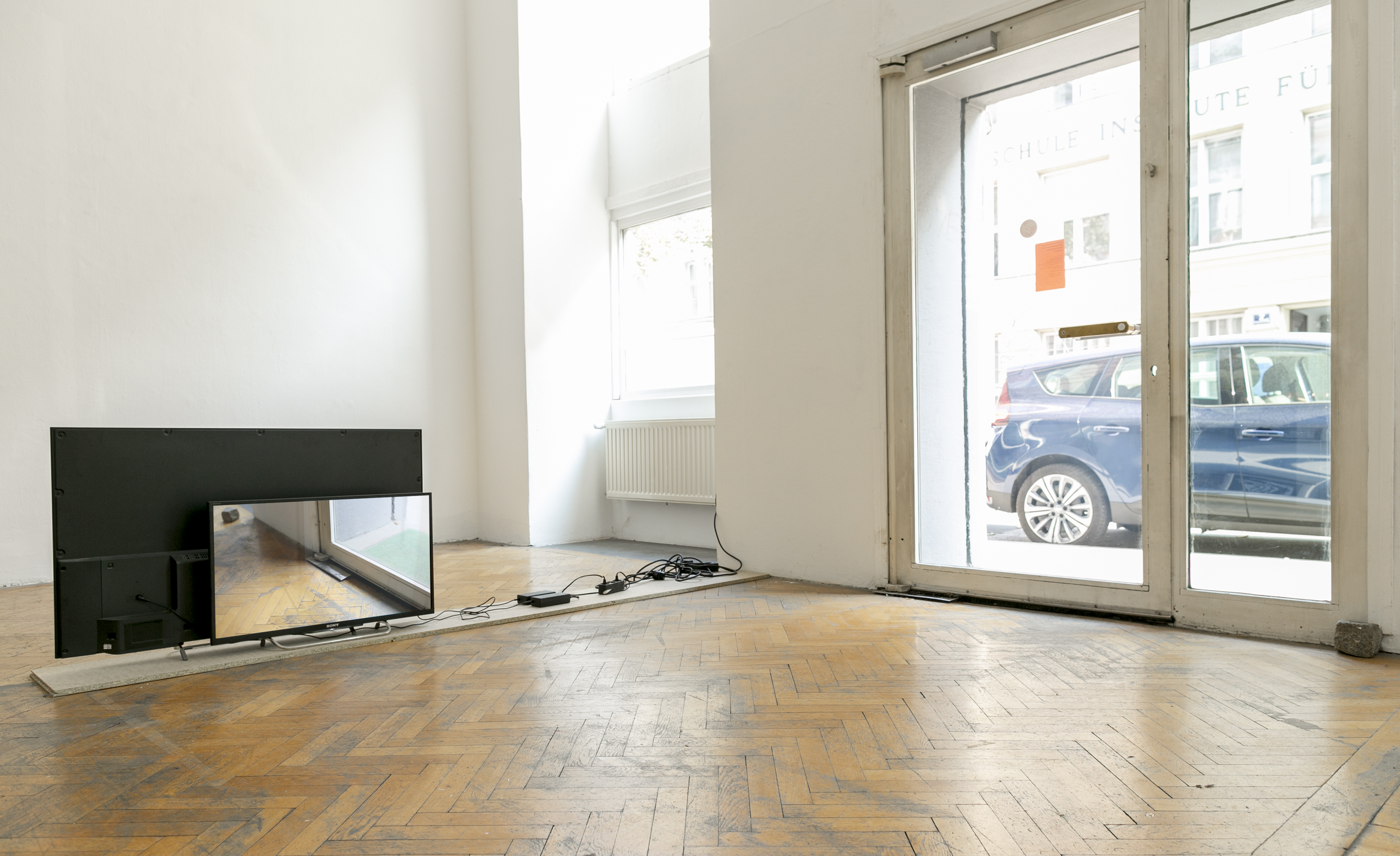
The artist acknowledges the direct support of IG Bildende Kunst staff in the development and presentation of this project, which evolved through embedded engagement with the organisation and an on-site residency. Since 1956, IG Bildende Kunst has represented the interests of visual artists in arts policy, social, economic, legal, and other professional matters.
This project incorporates the IG Bildende Kunst board meeting table, assembled and disassembled by IG Bildende Kunst curator and board member Vasilena Gankovska, together with the artist. At the time of this project, this trestle table was used on site multiple times a month to facilitate informal gatherings of artists, curators, museum directors, gallerists, and other cultural workers in response to escalating far-right policies impacting Austrian culture, society, law, and international relations.
This project incorporates the IG Bildende Kunst board meeting table, assembled and disassembled by IG Bildende Kunst curator and board member Vasilena Gankovska, together with the artist. At the time of this project, this trestle table was used on site multiple times a month to facilitate informal gatherings of artists, curators, museum directors, gallerists, and other cultural workers in response to escalating far-right policies impacting Austrian culture, society, law, and international relations.
Spillover (SCA/KNULP), 2021
equipment and furniture from SCA Gallery, folly gallery wall from the previous exhibition, retractable barrier, HD video footage with diegetic sound (duration 12min, looped), wall-mounted LCD screen (permanent courtyard fixture), dimensions and duration variable
in: ‘Transplant’, curated by Alex Gawronski, KNULP Gallery and SCA Gallery, Eora Sydney
equipment and furniture from SCA Gallery, folly gallery wall from the previous exhibition, retractable barrier, HD video footage with diegetic sound (duration 12min, looped), wall-mounted LCD screen (permanent courtyard fixture), dimensions and duration variable
in: ‘Transplant’, curated by Alex Gawronski, KNULP Gallery and SCA Gallery, Eora Sydney
This set of spillover works were developed for KNULP Gallery and SCA Gallery, simultaniously, in response to the provocation by curator Alex Gawronski




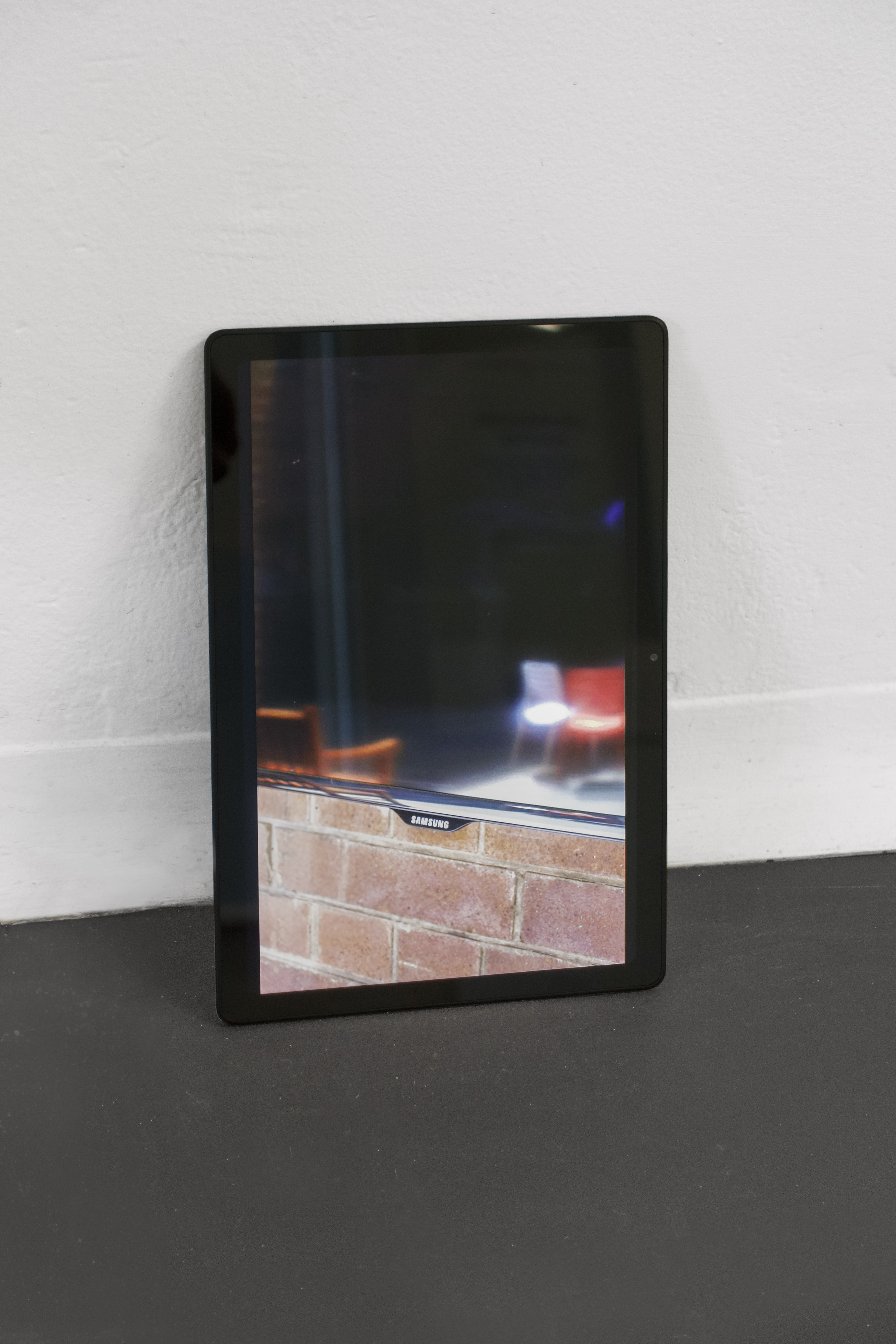


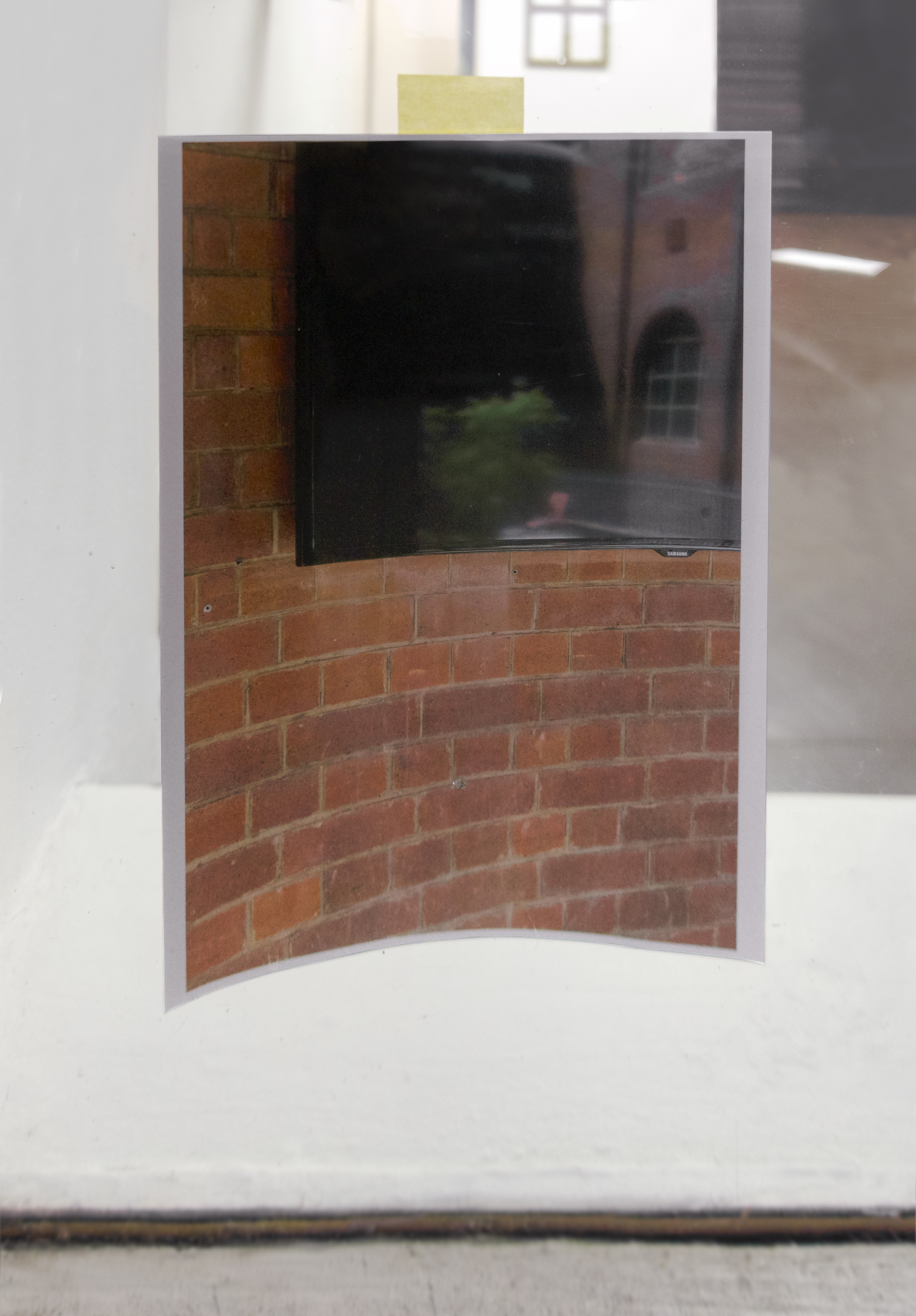
From Sarinah Masukor’s catalogue essay:
Things left behind expresses the mood of Helen Grogan’s spillover (2021), the work at the centre of SCA and the periphery of KNULP. Grogan is interested in the present and near past of a site, often using the time of installation and the duration of exhibition as material. The title describes something that doesn’t fit inside its container, and the work at KNULP, a small iPad placed low on the wall beside the window, cycles slowly thr
ough a series of shots of the SCA courtyard, the scenes mostly captured through their reflection in another, larger screen, positioned beside the SCA Gallery entrance. In the SCA Gallery, she’s wrapped a flimsy black plastic pole and ribbed ribbon barrier around the centre display walls of the gallery, cordoning off three large flat screens held in polystyrene protectors. One is covered, no draped, in that sroject of Grogan’s – has a small moving image playing on it. The moving image shows a similar and sometimes the same view of the courtyard as the screen at KNULP. Reflected in the screen installed by the university on the courtyard wall, two chairs sit empty. The glare of sun on screen makes the edges
of the chairs glow.“The exhibition Transplant was conceived as a collaboration between the independent artist space KNULP in Sydney's Camperdown, and Sydney College of the Arts (SCA) gallery, at the University of Sydney. Part of the underlying though not explicit mandate of the exhibition was to highlight the seminal role independent art spaces play in the creation and not just presentation, of contemporary culture locally (and around the world).
Things left behind expresses the mood of Helen Grogan’s spillover (2021), the work at the centre of SCA and the periphery of KNULP. Grogan is interested in the present and near past of a site, often using the time of installation and the duration of exhibition as material. The title describes something that doesn’t fit inside its container, and the work at KNULP, a small iPad placed low on the wall beside the window, cycles slowly thr
ough a series of shots of the SCA courtyard, the scenes mostly captured through their reflection in another, larger screen, positioned beside the SCA Gallery entrance. In the SCA Gallery, she’s wrapped a flimsy black plastic pole and ribbed ribbon barrier around the centre display walls of the gallery, cordoning off three large flat screens held in polystyrene protectors. One is covered, no draped, in that sroject of Grogan’s – has a small moving image playing on it. The moving image shows a similar and sometimes the same view of the courtyard as the screen at KNULP. Reflected in the screen installed by the university on the courtyard wall, two chairs sit empty. The glare of sun on screen makes the edges
of the chairs glow.“The exhibition Transplant was conceived as a collaboration between the independent artist space KNULP in Sydney's Camperdown, and Sydney College of the Arts (SCA) gallery, at the University of Sydney. Part of the underlying though not explicit mandate of the exhibition was to highlight the seminal role independent art spaces play in the creation and not just presentation, of contemporary culture locally (and around the world).